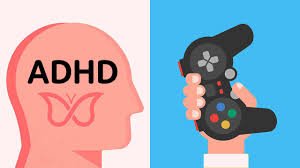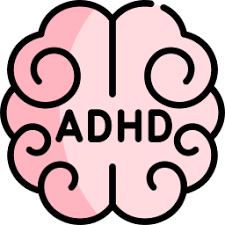Screen Time and Attention in the Digital Age: A Look at ADHD

Strong 8k brings an ultra-HD IPTV experience to your living room and your pocket.
There are many advantages to the digital age, such as easier access to information, better communication, and more productivity. But it has also brought up new difficulties, especially for those who suffer from Attention Deficit Hyperactivity Disorder (ADHD). People with ADHD may find it more difficult to focus and pay attention due to the continual barrage of notifications, social media updates, and internet distractions.This article will discuss how screen time affects people with ADHD, how to reduce distractions, and how important it is to set limits in the digital world.
Screen Time's Effect on ADHD
Excessive screen usage may have a number of detrimental effects on those with ADHD symptoms, according to research:
✍️ From behavioral therapy to medication and lifestyle strategies, there are multiple ways to manage ADHD. Learn more in our full ADHD treatment guide where we cover every approach in detail.
Distractibility
People with ADHD may find it difficult to focus on a single task due to the constant barrage of notifications, emails, and social media updates.
Enhanced impulsivity
The quick satisfaction that screens provide can encourage impulsive behavior, which lowers self-control and increases the chance of making rash judgments.
Sleep disturbances
Screen time prior to bed can cause sleep patterns to be disturbed, which can exacerbate symptoms of ADHD like irritation and exhaustion during the day.
Addiction to social media
Social media sites have the power to trigger the brain's reward system, which releases dopamine and makes one feel addicted. Stress levels may rise and motivation levels may drop as a result.
Techniques for Reducing Distractions
People can use the following tactics to lessen the detrimental effects of screen time on ADHD disorder:
Establish limits
Set aside times and places where screens are not allowed, like in bedrooms or during meals.
Use website blockers
Distracting websites or apps can be blocked during periods of focused work with tools like Freedom, SelfControl, or Cold Turkey.
Apply the Pomodoro Method
Work in concentrated 25-minute blocks and take 5-minute breaks in between. This method can assist people with ADHD in maintaining focus and preventing fatigue.
Engage in mindfulness
Frequent mindfulness meditation helps lessen mind-wandering and enhance attentional skills.
Make sensible use of technology
Use apps such as Focus@Will or Noisli to filter out distractions and create a peaceful setting in order to establish a productive environment.
The Value of Establishing Limits
Maintaining a good balance between screen time and attention requires setting boundaries. People that suffer from ADHD ought to:
Create a daily schedule
Allocate a specific period of time for using a screen, making sure that it doesn't conflict with other tasks.Set task priorities by concentrating on the most crucial things first and avoiding spending too much time on unimportant ones.
Breaks in the schedule
Regularly take time out to rest and replenish your energy to lessen the chance of burnout.
Keep an eye on usage
Utilize RescueTime or Moment to monitor screen time and pinpoint areas that require improvement.
Talk to other people
Establish limits with your family and coworkers so that everyone is aware of your requirements and constraints.
Screen Time's Benefits for ADHD
While excessive screen time can be harmful to people with ADHD, there are advantages to moderate use as well:
Greater information accessibility
The internet offers a wealth of resources for expanding one's knowledge, learning new skills, and keeping up with current affairs.
Enhanced creativity
Screen-based pursuits that allow for self-expression, such as coding, graphic design, and video editing, can foster creativity.
Social connections
People with ADHD can connect with people who have similar interests or experiences by using social media platforms.
Advice for Parents
Set a good example for your child by limiting your own screen usage and encourage them to follow suit.
Establish guidelines and penalties:
Clearly define the guidelines for using screens and the penalties for breaking them.
Keep an eye on usage
Observe your child's screen time with apps like OurPact or Circle.
Promote substitute activities
Encourage your youngster to pursue artistic or physical endeavors in order to model a well-rounded existence.
Seek out expert assistance
Seek advice from a mental health expert if your child exhibits indications of ADHD problems with excessive screen time.Together, as parents and caregivers, we can encourage balanced lifestyles and healthy behaviors while assisting people with ADHD in thriving in the digital age.
In summary
People with ADHD have particular obstacles in the digital era. However, people with ADHD can still take advantage of the benefits of technology while maintaining focus and attention by putting tactics in place to reduce distractions and creating boundaries around screen usage.In conclusion, finding a balance between screen time and attentiveness is critical for people with ADHD. By doing this, people can maximize technology's positive effects on their daily lives while simultaneously maximizing its drawbacks.
Note: IndiBlogHub features both user-submitted and editorial content. We do not verify third-party contributions. Read our Disclaimer and Privacy Policyfor details.







